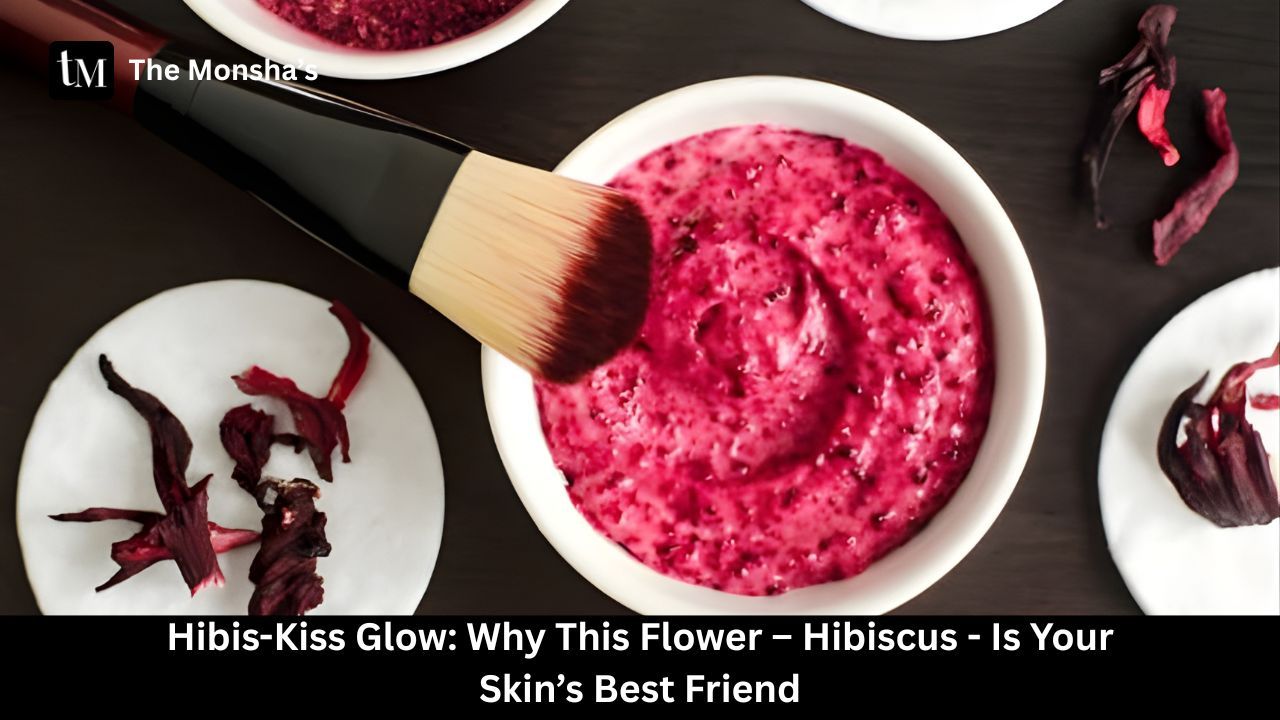
“Phoolon ka taaron ka… sabka kehna hai…” 😅 but honestly, it’s this one flower that your skin might actually thank you for — the hibiscus. Somewhere between dadi ke nuskhe and those new-age K-beauty serums, hibiscus has quietly been called the “botox plant.” And as someone who’s tested way too many DIY packs and still gets panda eyes from late nights, let me tell you — this flower deserves the hype.
Hibiscus isn’t just pretty — it’s powerful. Packed with natural acids, antioxidants, and mucilage (yep, that’s the hydrating gooey stuff), it exfoliates gently, hydrates, firms up skin, and fades dullness. Use it in masks, toners, gels, or scrubs — but always patch test. 🌺
Hibiscus (think Hibiscus rosa-sinensis or H. sabdariffa) isn’t just garden décor. Its petals are rich in alpha hydroxy acids (AHAs), anthocyanins (antioxidants), vitamins, and natural mucilage. Together, these work like a multi-tasker: mild exfoliation, hydration, collagen support, and brightening. Unlike harsher acids or retinols, hibiscus gives you results without burning your face off.
The AHAs in hibiscus help shed dead skin cells, smoothening rough patches and making skin look fresher. Studies on natural AHAs suggest they improve texture without irritation.
Hibiscus is often called a “botox plant” because it may inhibit enzymes that break down elastin. Translation: skin stays firmer, longer. Plus, antioxidants fight oxidative stress that leads to fine lines.
That mucilage? It’s basically plant-based slime that helps skin retain water. Perfect for dryness, dehydration, and tight-feeling skin.
By promoting cell turnover and reducing melanin build-up, hibiscus helps balance tone and fade dark patches.
With anti-inflammatory properties, hibiscus helps soothe redness, making it a gentle option for sensitive or sun-exposed skin.
👉 Always patch test — behind the ear or jawline for 24 hours.

👉 Pro tip: Freeze hibiscus water into ice cubes. Rub on face for an instant pick-me-up (hello lazy girl hack ✨).
Cosmetic studies show hibiscus extract improves elasticity and hydration, thanks to its AHAs and antioxidants. Some lab tests highlight its role in reducing collagen breakdown. In practice? People using hibiscus masks twice weekly report softer, brighter skin. Personally — I’ve seen dullness fade quicker than my chai cup empties.
Not bleach-lightening, but it balances tone and fades dull patches with regular use.
Better 2–3 times a week. Daily use may over-exfoliate.
Patch test first. If redness or itching happens, dilute with calming agents like aloe.
Usually 3–4 weeks of consistent use.
Depends on convenience. Powder is versatile, petals feel luxe, extract is potent.
Hibiscus isn’t just a flower for pretty hair oil ads — it’s legit skincare gold. From exfoliation to hydration to anti-aging, this flower has all bases covered. Just go slow, dilute smartly, and stay consistent. Bas phir toh “skin mein chamak, filter mein aaram.” ✨